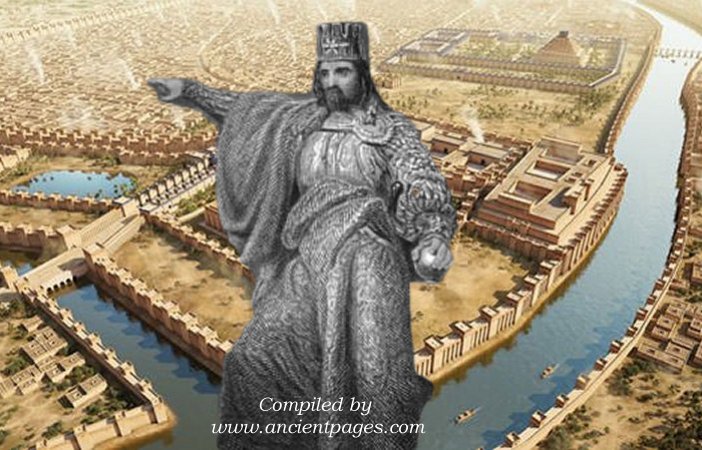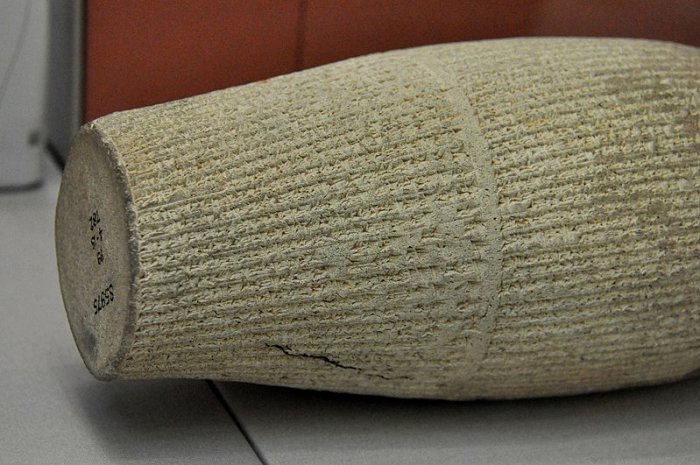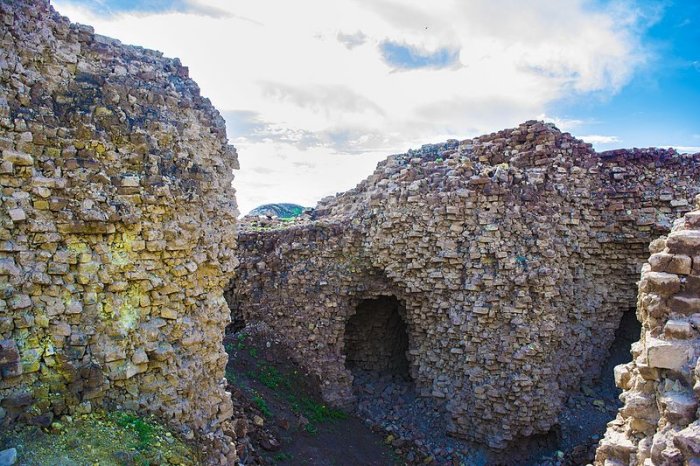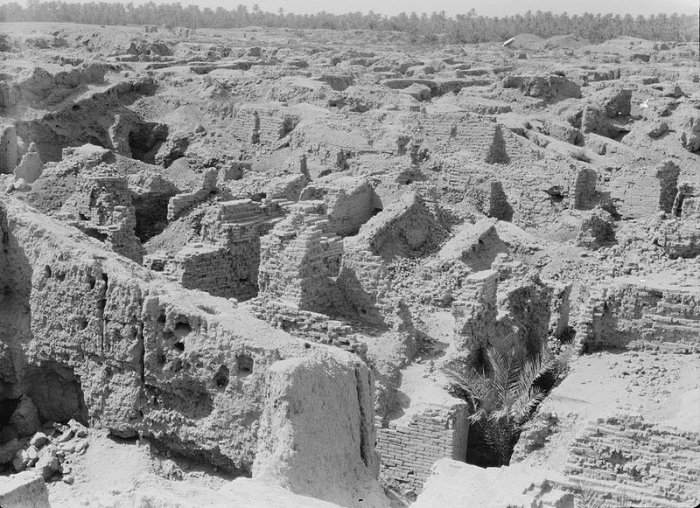Babylon’s Kiln-Fired Bricks Almost Erased The City From History
Ellen Lloyd - AncientPages.com - King Nebuchadnezzar II (c. 605 BC – c. 562 BC), the greatest ruler of the Neo-Babylonian Empire, had no intention of letting enemies enter the mighty city of Babylon.
Babylon was a symbol of greatness, power, and destruction. It was a place you either feared or loved. King Nebuchadnezzar II ordered his workers to build temples and other buildings using tough kiln-fired bricks to protect Babylon from intruders and make the city magnificent.
His hope and goal was that palaces, temples, and walls would last longer if they were constructed with such building material, as opposed to the frequently used sun-dried bricks that were often unstable.
King Nebuchadnezzar II Wanted Babylon To Last
King Nebuchadnezzar II wanted to leave behind an everlasting legacy, and his architecture surpassed the accomplishments of most of the Assyrian kings in the history of Mesopotamia.
He built extraordinary fortification walls, gates, palaces, temples, roads, bridges, and ziggurats. King Nebuchadnezzar II also designed the famous Hanging Gardens of Babylon, which archaeologists still haven't located. However, one expert on the Babylonian language proposed an ancient script that does in fact, reveal the location of this mysterious place.
King Nebuchadnezzar II turned Babylon into the most powerful empire of its day, and he was correct about the building material. The structures did last, and Babylonians could be proud of their city. However, the hard kiln-fired bricks were just as much a blessing as a curse.
Detail of a terracotta cylinder of King Nebuchadnezzar II, recording the building and reconstruction works at Babylon. 604–562 BC. From Babylon, Iraq, housed in the British Museum. Credit: Public Domain
The chosen building material did protect Babylon, and King Nebuchadnezzar II could boast about his architectural marvels. Still, as we are soon about to find out, the hard kiln-fired bricks almost erased the city from history.
Fall Of Babylon
Sooner or later, everything comes to an end, and Babylon's glorious times were over.
As previously mentioned in our article, Glory And Fall Of Babylon Dedicated To The Cult Of Marduk, "in 539 BC, the Neo-Babylonian Empire fell to Cyrus the Great, king of Persia, but under Persian rule, the town still flourished; it became a center of learning and science.
The city became the administrative capital of the Persian Empire and remained very important for more than two centuries.
The Persian kings made several attempts to protect religious ceremonies in Babylon, but the Babylonian people protested against Persian dominance.
Walls of Babylon and the ziggurat Etemenanki were destroyed, and the golden statue of Marduk – disappeared."
Brick structures in Babylon, photographed in 2016. Credit: Public Domain
When Alexander the Great became the ruler of Babylon, he tried to restore the city's glory, but he failed because he died in the city.
According to a tablet dated 275 BC, the inhabitants of Babylon were deported to Seleucia, and thus, Babylon became insignificant as a city.
Babylon, A City Almost Erased From History
In 764 A.D., when Bagdad, Iraq's capital, was founded, Babylon had long lost its glory, and there was not much left of the ancient city.
Parts of early Bagdad were built with kiln-fired bricks taken from Babylon's ruins. Workers also needed building materials during the Middle Ages, and the kiln-fired bricks offered the perfect solutions to many architectural constructions. Babylon was slowly but consistently taken apart, bit for bit.
Babylon in 1932 - image via Wikipedia
In 1898, when German archaeologist Robert Koldewey (1855-1925) started to excavate in the region, it was almost impossible to see this was where a magnificent ancient city had once stood. Fortunately, Koldewey and his team could eventually discover the ancient ruins of some incredible structures raised by King Nebuchadnezzar II 2,500 years earlier.
Koldewey spent 18 years excavating Babylon, and during this time, he unearthed only a small portion of this magnificent ancient city. Still, we thank Koldewey for discovering the famous Ishtar Gate, the foundations of the ziggurat Marduk, the outer walls, and inner walls, and the foundation of Etemenanki, a temple sometimes identified as the "Tower of Babel".
Iraq's former dictator Saddam Hussein who called himself the "successor" to King Nebuchadnezzar II spent millions rebuilding the ancient site of Babylon, reconstructing the city's walls and palaces.
Archaeologists digging in Iraq still find precious ancient ruins and artifacts, but the instability in the region makes the work extremely difficult. Somehow, it feels as if King Nebuchadnezzar II's dream of keeping Babylon alive was never meant to last.
Written by Ellen Lloyd – AncientPages.com
Updated on November 4, 2024
Copyright © AncientPages.com All rights reserved. This material may not be published, broadcast, rewritten or redistributed in whole or part without the express written permission of AncientPages.com
Expand for referencesAusten H. Layard - Nineveh and Babylon
Austen H. Layard - Discoveries among the Ruins of Nineveh and Babylon
More From Ancient Pages
-
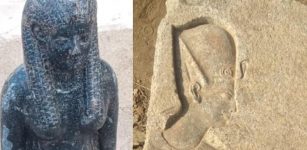 Artifacts Unearthed In Mit-Rahina, South Of Giza, Egypt
Archaeology | Jul 29, 2020
Artifacts Unearthed In Mit-Rahina, South Of Giza, Egypt
Archaeology | Jul 29, 2020 -
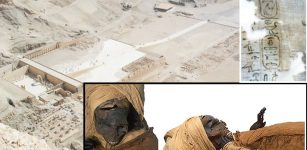 King Seqenenre Taa II Was Killed By Hyksos Invaders – Mummy Scans Reveal His Wounds
Archaeology | Feb 17, 2021
King Seqenenre Taa II Was Killed By Hyksos Invaders – Mummy Scans Reveal His Wounds
Archaeology | Feb 17, 2021 -
 On This Day In History: Battle Of King’s Mountain Was Fought – On Oct 7, 1780
News | Oct 7, 2016
On This Day In History: Battle Of King’s Mountain Was Fought – On Oct 7, 1780
News | Oct 7, 2016 -
 Bizarre Towering Pillars Of Externsteine: Myths, Legends And Sacred Rituals From Times Long Gone
Civilizations | Jan 7, 2017
Bizarre Towering Pillars Of Externsteine: Myths, Legends And Sacred Rituals From Times Long Gone
Civilizations | Jan 7, 2017 -
 New Method Reveals Falsified And Original Manuscripts Of Famous Robert Burns
Archaeology | Jul 28, 2018
New Method Reveals Falsified And Original Manuscripts Of Famous Robert Burns
Archaeology | Jul 28, 2018 -
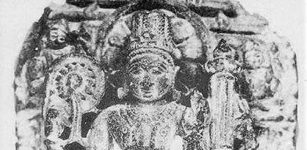 Dwarka – Pre-Harappan City That Could Rewrite The History Of The World
Civilizations | Aug 19, 2014
Dwarka – Pre-Harappan City That Could Rewrite The History Of The World
Civilizations | Aug 19, 2014 -
 On This Day In History: Battle Of Naulochus Was Fought Off The Coast Of Sicily – On Sep 3, 36 BC
News | Sep 3, 2015
On This Day In History: Battle Of Naulochus Was Fought Off The Coast Of Sicily – On Sep 3, 36 BC
News | Sep 3, 2015 -
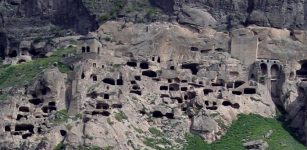 Uplistsikhe Devastated By Genghis-Khan Hordes But Once City-Fortress Of Queen Tamar
Featured Stories | Apr 12, 2021
Uplistsikhe Devastated By Genghis-Khan Hordes But Once City-Fortress Of Queen Tamar
Featured Stories | Apr 12, 2021 -
 Ancient Indian Sages Had Highly Advanced Scientific Knowledge Thousands Of Years Ago
Ancient Technology | Mar 18, 2019
Ancient Indian Sages Had Highly Advanced Scientific Knowledge Thousands Of Years Ago
Ancient Technology | Mar 18, 2019 -
 Neanderthal And Denisovan Blood Groups Deciphered And The Results Are Surprising
Archaeology | Aug 2, 2021
Neanderthal And Denisovan Blood Groups Deciphered And The Results Are Surprising
Archaeology | Aug 2, 2021 -
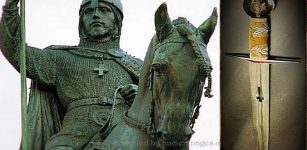 Prince Wenceslaus Of Bohemia Murdered On Order Of His Own Brother
Featured Stories | Nov 19, 2019
Prince Wenceslaus Of Bohemia Murdered On Order Of His Own Brother
Featured Stories | Nov 19, 2019 -
 Huge 7,000-Year-Old Man-Made Structures Used For Religious Rituals Spotted In Poland
Archaeology | Nov 30, 2019
Huge 7,000-Year-Old Man-Made Structures Used For Religious Rituals Spotted In Poland
Archaeology | Nov 30, 2019 -
 On This Day In History: Astronomer John Couch Adams And The Discovery Of Planet Neptune – On July 3, 1841
News | Jul 3, 2016
On This Day In History: Astronomer John Couch Adams And The Discovery Of Planet Neptune – On July 3, 1841
News | Jul 3, 2016 -
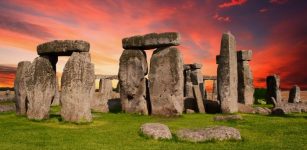 Stonehenge Is Older Than Mankind – Archaeologist Suggests
Archaeology | Apr 12, 2018
Stonehenge Is Older Than Mankind – Archaeologist Suggests
Archaeology | Apr 12, 2018 -
 New Genes May Explain Why Humans Got Such Big Brains
Archaeology | Jun 2, 2018
New Genes May Explain Why Humans Got Such Big Brains
Archaeology | Jun 2, 2018 -
 12 Ancient Myths, Legends And Biblical Stories Confirmed By Modern Science
Featured Stories | Apr 22, 2017
12 Ancient Myths, Legends And Biblical Stories Confirmed By Modern Science
Featured Stories | Apr 22, 2017 -
 Unexplained Historical Mass Disappearances – Where Did They Go? – Part 2
Featured Stories | Jun 4, 2019
Unexplained Historical Mass Disappearances – Where Did They Go? – Part 2
Featured Stories | Jun 4, 2019 -
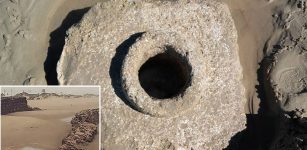 Fragments Of 50-Mile-Long Roman Aqueduct And Road In Cádiz, Spain Revealed By Storm
Archaeology | Mar 10, 2018
Fragments Of 50-Mile-Long Roman Aqueduct And Road In Cádiz, Spain Revealed By Storm
Archaeology | Mar 10, 2018 -
 Llangernyw Yew: Chilling Prophecy Of The Oldest Tree In Wales
Featured Stories | Oct 28, 2022
Llangernyw Yew: Chilling Prophecy Of The Oldest Tree In Wales
Featured Stories | Oct 28, 2022 -
 Koshchey ‘The Immortal’: Strong And Wise Ruler Of Darkness In Slavic Mythology
Featured Stories | Jul 3, 2016
Koshchey ‘The Immortal’: Strong And Wise Ruler Of Darkness In Slavic Mythology
Featured Stories | Jul 3, 2016

